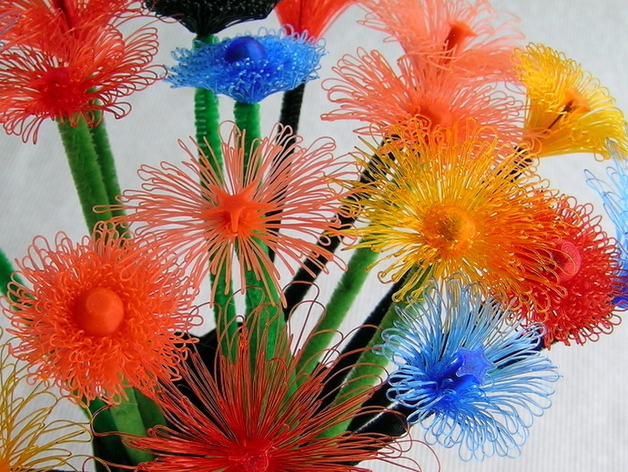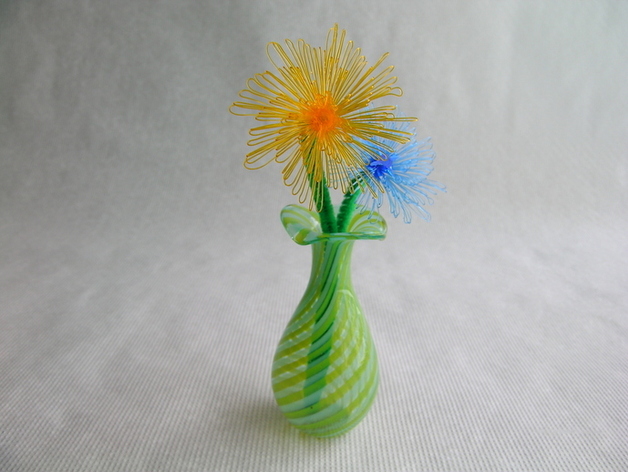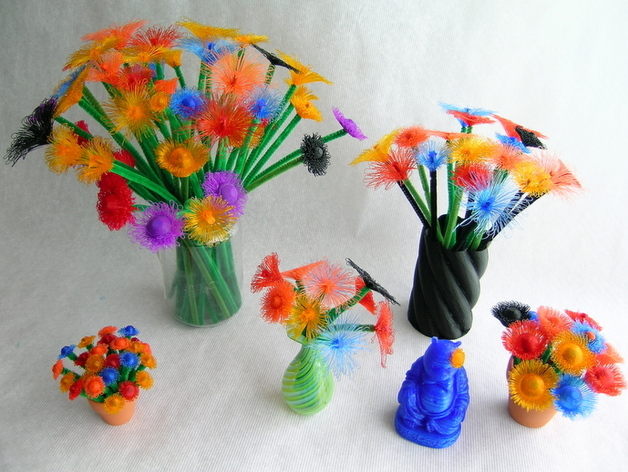
This week’s selection is the radical Super Flowers by Michigan-based Mark Peeters.
The Super Flowers are utterly unlike any 3D print you’ve likely seen before. The flower petals are slightly random and seemingly impossible to 3D print using conventional techniques.
Peeters realized he could leverage what is commonly seen as a constraint of 3D printing in a useful way. “Droop” occurs when an extrusion takes place without sufficient support material – or in this case, ANY support. Warm plastic without support beneath simply droops and often causes very unsightly flaws in normal prints.

However, Peeters developed an OpenSCAD script that generates 3D models of flowers with the petals made from exactly such droops. The petals are 3D printed “in the air” and with the right speed and material flow, you can produce these fascinating shapes.
Peeters explains:
I am exploring deliberately making drooloops, (I made that word up, droop+loop) and trying to harness the neat shapes you can get. This is my first attempt at something neat.
and
These are really fun to design and print. Each print job is fun since there’s a slight element of randomness. The randomness is because we are deliberately “printing in the air” to create the “drooloops” (droop+loop) that make these flowers look so amazing.
Watch the video to see how this works when printing:
One issue when printing in this manner is control of cooling. While you do want the “droop”, you also want the plastic to freeze reasonably quickly. However, Peeters discovered that typical 3D printers’ fans blow asymmetrically across the print, producing “wind blown” petals.

The takeaway is that you must play with your machine’s settings to find an optimal configuration to best print the Super Flowers. You’ll also have to play with the OpenSCAD parameters as well as your slicing options.
It’s not an instant print, but if you can figure out how to make your 3D printer do this, you’ve opened up a new are of 3D printing exploration.
Via Thingiverse

